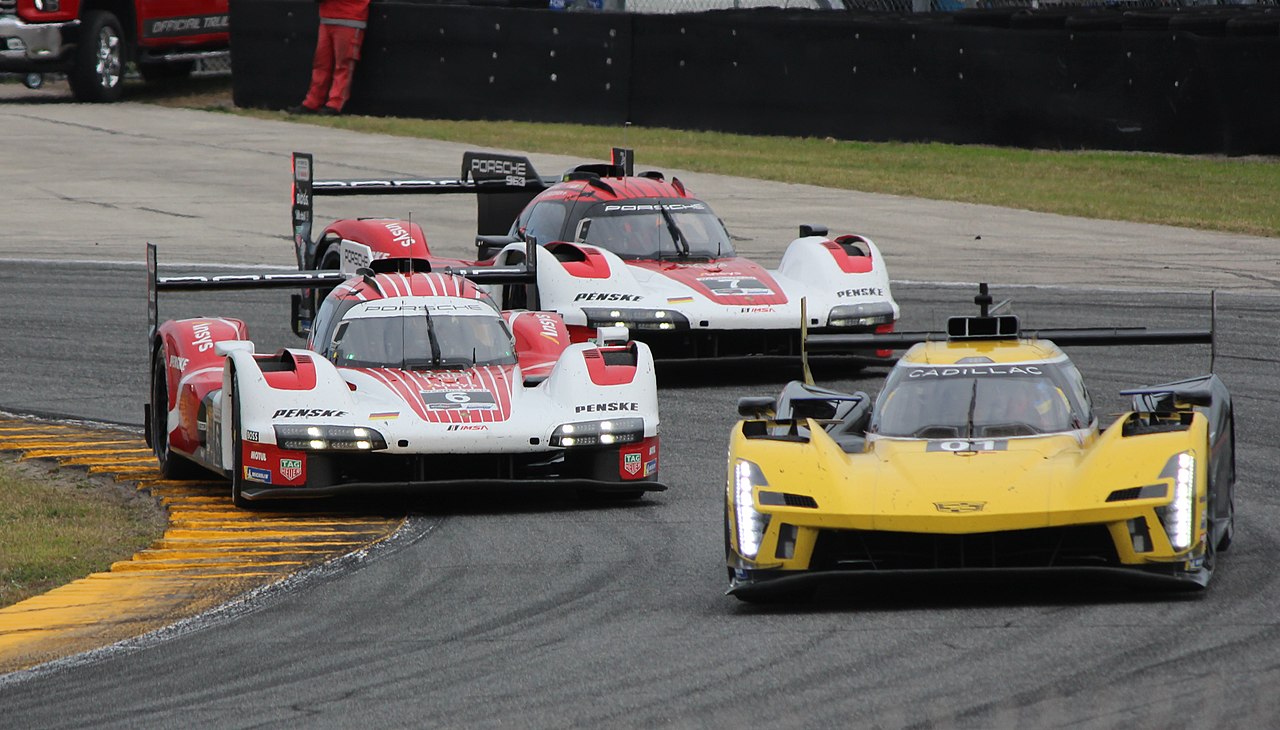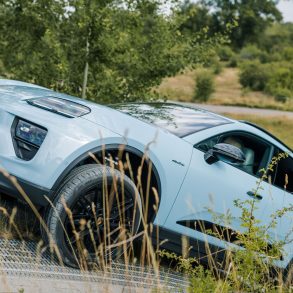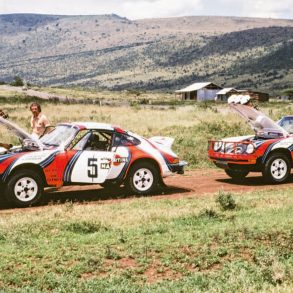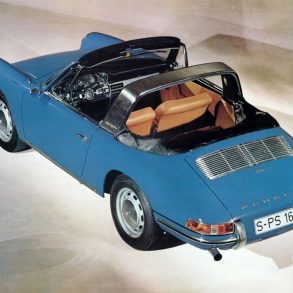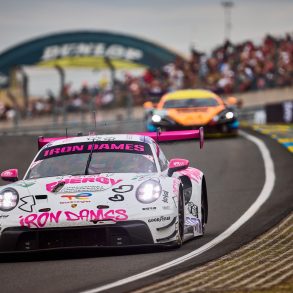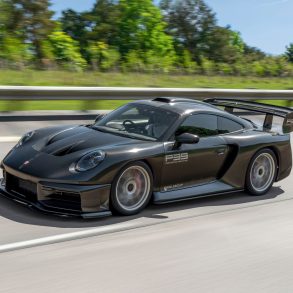To say that the 2023 24 Hours of Daytona were “interesting” for Porsche is not understating the fact. From what most teams and drivers saw as a severe Balance of Performance (BoP) issue for the GTD/GT3 Type 992 911 GT3 R’s imposed by IMSA, to the new Type 963 LMDh Hypercar Prototype encountering major issues across both cars entered, it was more of a learning experience than anything. While Stuttgart is generally very good at having things work straight out of the gate, sometimes a big team with factory support and works drivers simply encounters a bad turn of luck. Such is the drama of endurance racing.
2023 Type 992 911 GT3 R Balance of Performance
Perhaps the biggest talking point in the week leading up to the race was the new formula that both the FIA and IMSA are using, now that their rules and regulations are 99% shared between both authorities, to determine fair BoP to make sure the GTD/GT3 class is competitive. Moving up from the Type 991 911 GT3 R to the Type 992, Porsche’s big change was increasing the engine displacement by a hair under 200 cc, from 4.0L to 4.2L. This, in turn, generated slightly more power, while the car itself was made of slightly lighter carbon composites and carbon fiber.
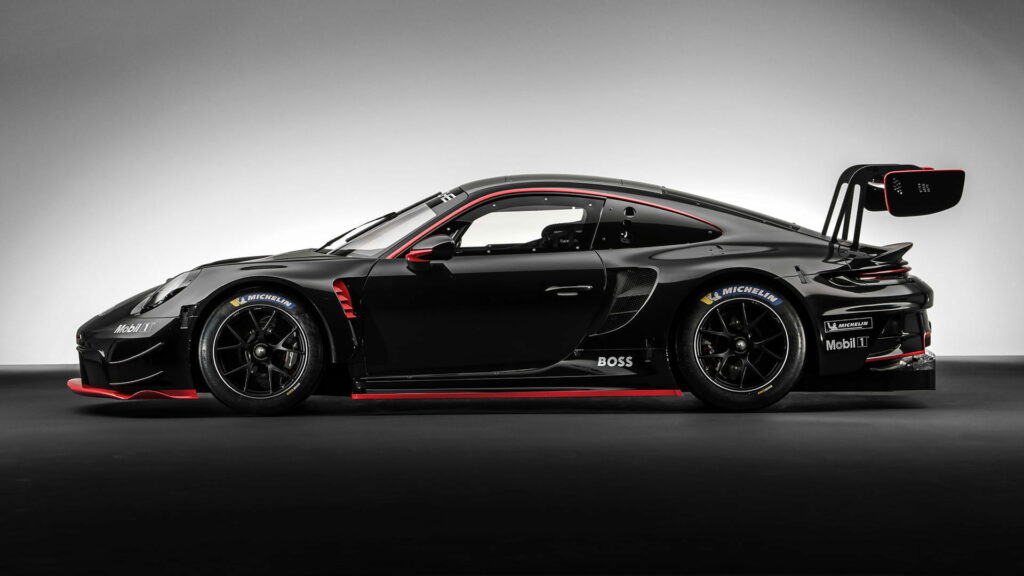
To define “slightly” as used above, we are meaning in the sense of maybe 2 to 3% more power and maybe, at a stretch, 3% less weight. However, with the new aerodynamics package that the Type 992 GT3 R brought with it, it was able to absolutely scream around the banked oval parts of Daytona, while still being planted and stable in the corners on the flat parts of the track. Because of that higher top speed, IMSA fitted the car with a 35mm restrictor, 5mm larger than the 30mm one that was fitted to the Type 991. In effect, while the car was only marginally faster per lap than previous years, the BoP imposed was more along the lines of a 10% decrease in performance year to year.
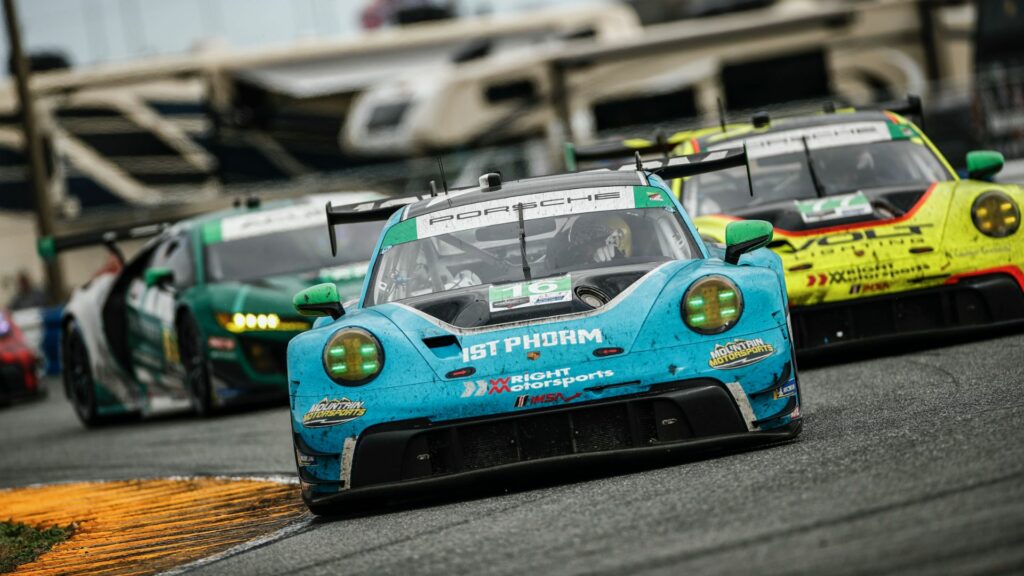
This, in turn, caused the normally strong flat-six engine to start to starve slightly in the top 2,000 RPMs before the redline. As a good half of the lap at Daytona is with the tachometer buried into the redline in sixth gear while on the banked oval, this cause a rather shocking loss of top end speed for the Porsche’s, to the tune of 10 to 15 MPH. That might not seem like much, but when you’re having to defend against a car that is in your slipstream and on sheer raw power it is able to go that little bit faster, it can make that defence nearly impossible.
For a car that in previous years was always near the top of the class, the fact that the highest placed Type 992 GT3 R was in 25th overall was a bit stunning. They were a respectable 5th in class in GTD Pro with works drivers, but the fact they were absolutely hobbled compared to the Mercedes-AMG GT3 Evo, Corvette Z06 C8.R GTD, and Lexus RC-F GT3 that took the top three podium spots in the class was worrying.
However, and to make a counterpoint, this was the first race of the new combined regulations, and the first laps in anger of the Type 992 GT3 R. Part of BoP is adjusting it race to race, and the teams have apparently had a conversation with IMSA in which the governing body has said they may have put too much of a BoP hit on the 911s. The next race, the 12 Hours of Sebring on March 15, is a good month and a half away, during which time IMSA can go over all the data collected from all the competitors and work to make the BoP fairer.
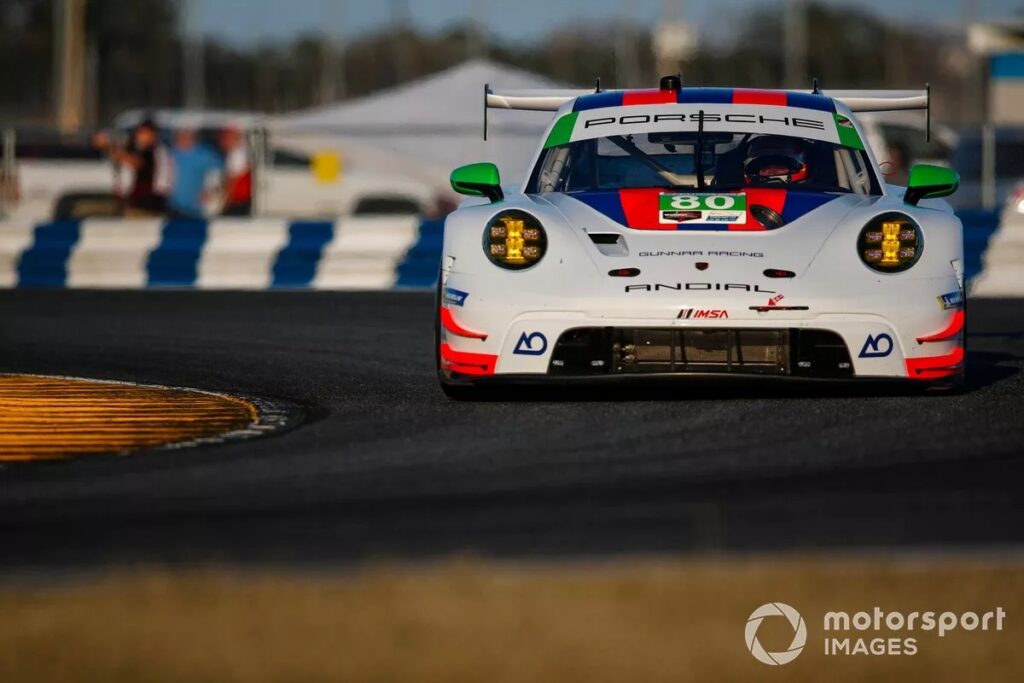
As well, with no less than 7 Type 992 GT3 R’s in the race, only one did not finish, and that was because it caught fire. This, while many other new cars from other manufacturers at the race had multiple non-finishers, shows that while the BoP might have been a bit too strict, good, old fashioned Porsche Motorsport reliability is still in full force.
2023 Type 963 Porsche-Penske LMDh Hypercar Prototype
For Porsche’s much talked about return to the top tier of prototype racing, things started out rather well. During qualifying, the #7 Type 963 was able to secure second place in the GTP field, a scant 0.083 seconds behind the #10 Acura ARX-06 hypercar, while the #6 Type 963 was put to the back of the GTP field after crashing heavily during the final part of qualifying, causing a red flag to be flown. At the start of the race, the #7 was able to mostly hold position, while the #6 was absolutely carving through the field like a laser through softened butter.
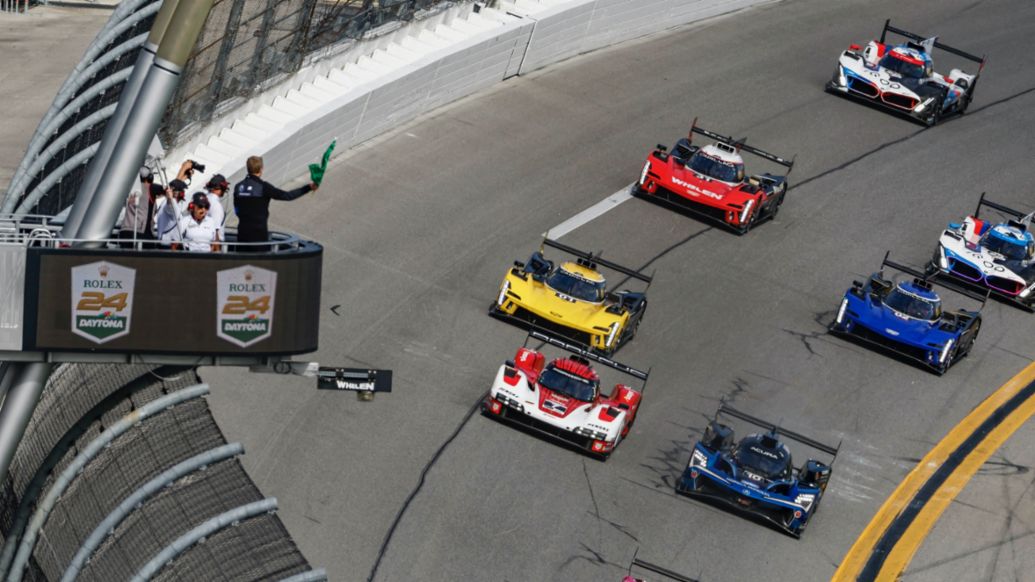
The #6 was moving up so rapidly that it caught a few drivers by surprise, with the most heated exchange being between the #60 Acura ARX-06 and the #6 Type 963, which after a few laps ultimately ended up with the Acura tagging the left rear of the Porsche. Through some amazing reactions, the only thing that happened was that the #6 was forced off the road, not spinning and not contacting any barriers. To speak to the strength of the car, the only damage noted during the first pit stops, about an hour into the race, was that the paint had some light scuffing on it. No carbon damage, no broken winglets or any damage to the wheel well, wheel, or tire at all.
Just before the halfway mark, in the middle of the night, as pit stops rotated through the field and competitors started to encounter terminal car issues that would take them out of the running, the #6 Type 963 briefly led the entire race.
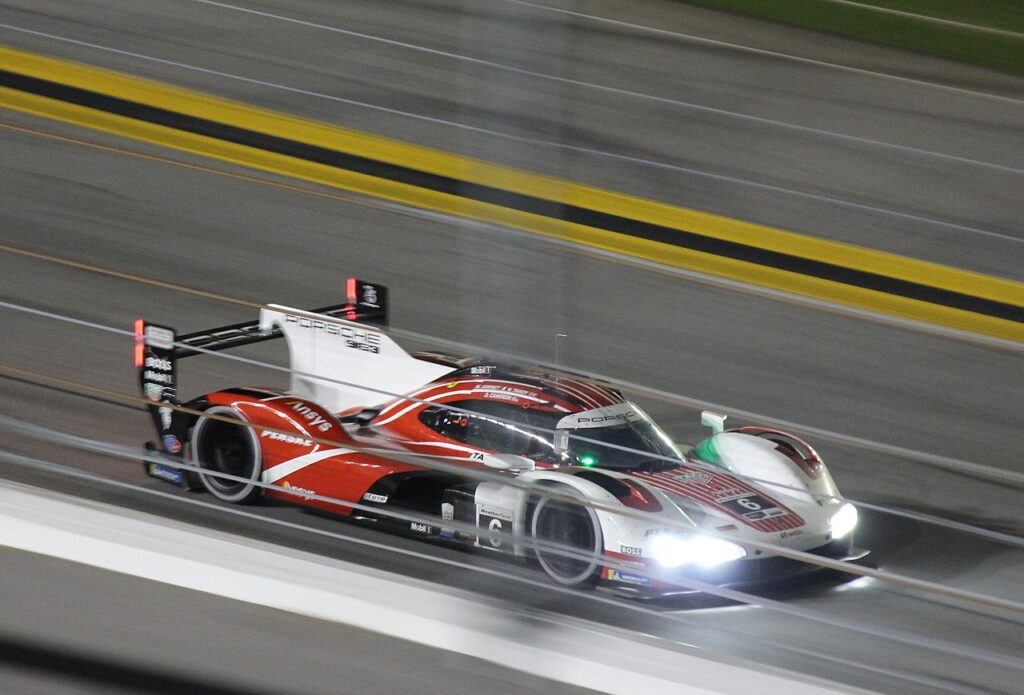
That, however, was the high point for Stuttgart, as it was in the second half where things started to take a downward spiral.
Firstly, the #7 Type 963 suffered some significant issues as pretty much every warning and alarm light lit up the inside of the car just after the halfway mark. It was forced to pit immediately, and was out of the race for nearly 50 minutes, with 30 of those minutes being spent in the garage in the paddock area taking the car apart to replace parts of the energy recovery and deployment portion of the hybrid system. It was able to return to racing, but was so far down the order that several LMP2 and even a couple of LMP3 cars were ahead of it.
The #6, in the breaking dawn before sunrise, suffered a pretty monumental spin at speed in the infield section of the track, which ended up with it collecting a significant amount of body damage. This was severe enough to require the car being wheeled back to the garage area for major repairs, which cost it several laps. While it was able to return to the track, the spin and rough ride over the infield section would ultimately come back to bite the #6, and hard.
During the 21st hour of the race, the #6 began to show small puffs of smoke from the rear, especially during upshifts and downshifts. Moments later, a continuous trail of smoke came from the direct center of the rear of the car, which for a race car means only one of two things: engine failure or gearbox failure. The #6 ground to a halt at one of the highest speed parts of the track, the Le Mans Chicane which splits the two banked oval portions of the track, and a full course yellow was flown so the car could recover to the pit lane on the electric motor only.
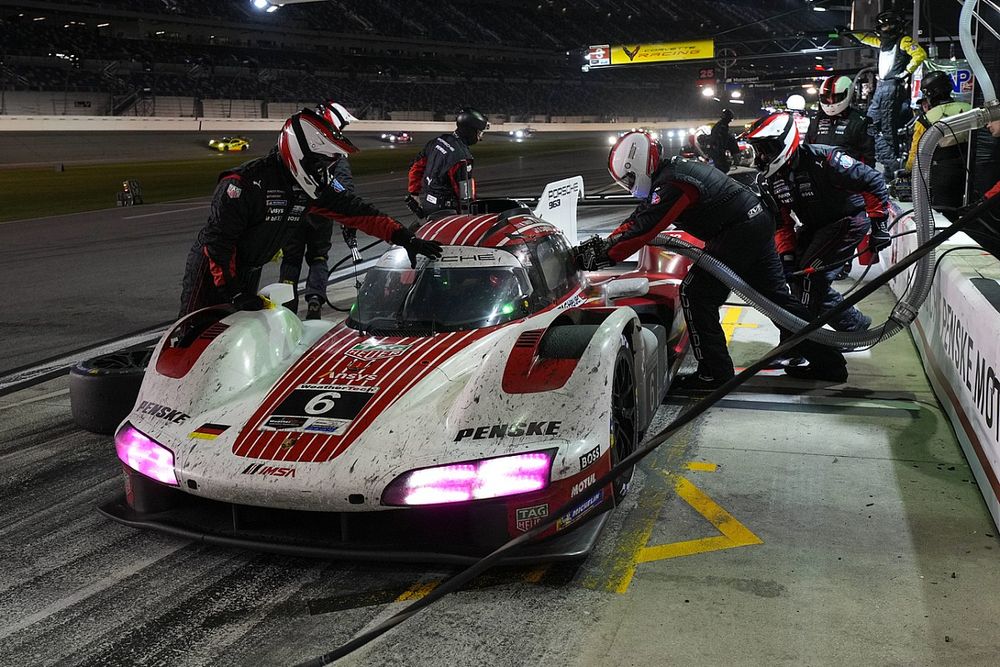
When the team was able to check the data as well as visually inspect the car, it was determined that the gearbox had completely failed, and the #6 was withdrawn as a DNF retirement.
Despite a heroic effort and some pretty spectacular laps, the #7 Type 963 was only able to recover to 14th position overall, dead stone last in the GTP class by the time the checkered flag was flown. Their total deficit was a sizable 34 laps behind the winning Acura ARX-06.
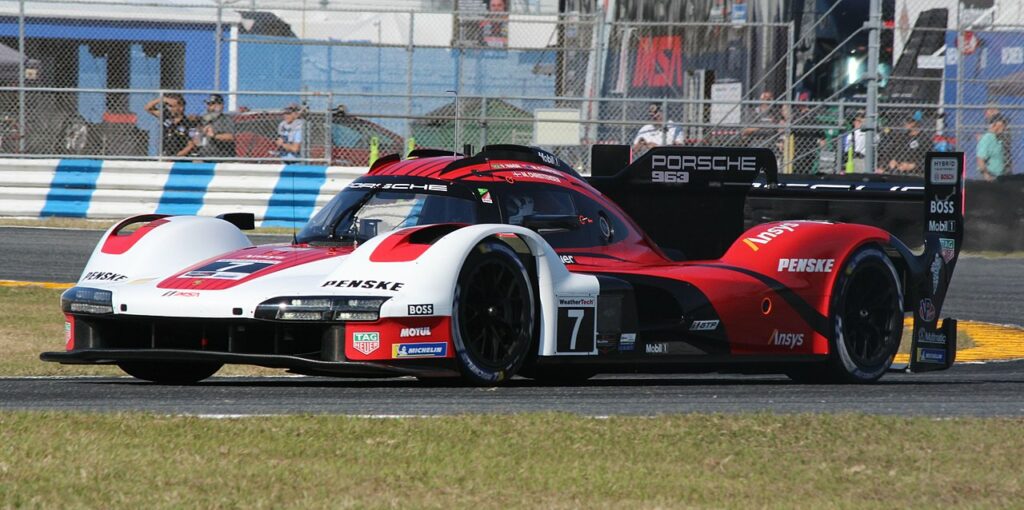
The only real upside to all of this is that the 24 Hours of Daytona, despite its history and prestige, is not the biggest race of the year. As well, since both cars ran at least 21 hours, there is a significant amount of performance data and telemetry to be analyzed, pored over, learned from, and used to help improve the car. The target for Porsche has been, and always will be, Le Mans, where their name is stamped firmly into history.
Porsche Overall At The 24 Hours Of Daytona
While it may sound at times like we’re being disparaging or even contentious about the race, nothing could be further from the truth.
Take into account that there is an entire field of brand new, never-raced-before cars, including many from the top tier hypercar class. IMSA had no idea what each car was capable of with wheels on the track until those wheels actually touched the track, and had to generate BoP based on limited running. It happens in racing that sometimes the BoP is a bit overzealous, as the restrictor did nothing to the low or mid-range power of the Type 992 GT3 R’s. It was only at the high end they started to gasp and wheeze, and it just so happens that unfortunately, a lot of Daytona is run completely flat out.
That is also something to note as well, that despite the electrical issues, at least the #7 Type 963 made it far enough to be classified and was able to finish at all. The same can be said for the Type 992 GT3 R’s, as all but one of them finished. For a lot of racing manufacturers, that’s a pretty stellar finishing rate. They may not be in podium places or even the top half of the class, but they finished after running at racing speed and stresses for 24 hours.
We suspect that Porsche will look back at the 2023 24 Hours of Daytona not with bitterness or disappointment, but as their VW Group compatriots did in their LMP1 years, with analysis and with an eye towards learning. It should also be noted that when the 919 Hybrid LMP1 came along, it too started its first race and landed with a muffled thud somewhere in the midfield. But when and where it counted, at Le Mans, the 919 had been sorted and it was invincible for nearly half a decade. Porsche has been here before, and we suspect through their displays throughout history that they know a thing or two about turning a bad result into a championship year.


